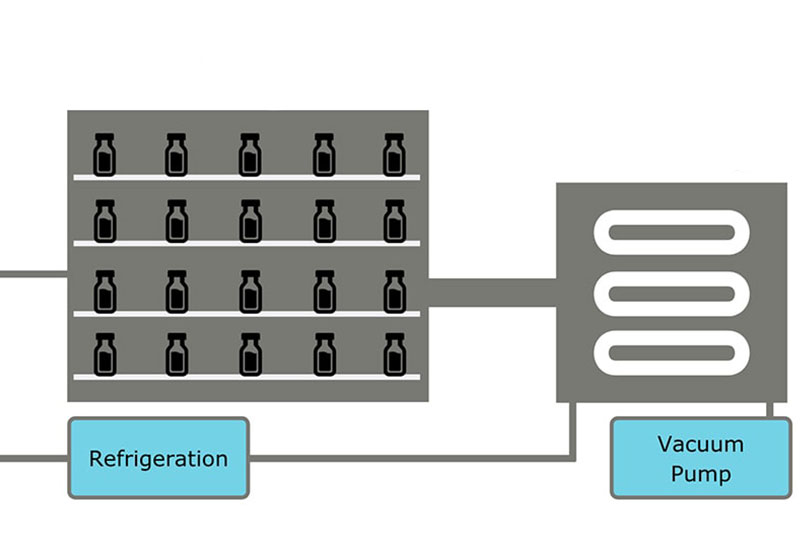In the device called lyophilizer, the materials are frozen by going down to -50 to -600 C. It creates a vacuum environment that will provide both sublimation and drying.
Frozen products can be placed in this device in another refrigerator. The escaping water vapor is turned into ice by condensing in the condensers instead of being discharged by the vacuum pump.
This is thawed out before the next cycle. Cycle freezing consists of primary drying and secondary drying phases.
In the secondary drying, the last water molecules attached to the material are taken out with the help of vacuum. Time varies from product to product. If the freezing speed is slow, large ice crystals are formed, if fast, small ice crystals are formed. This affects the drying rate and speed.

